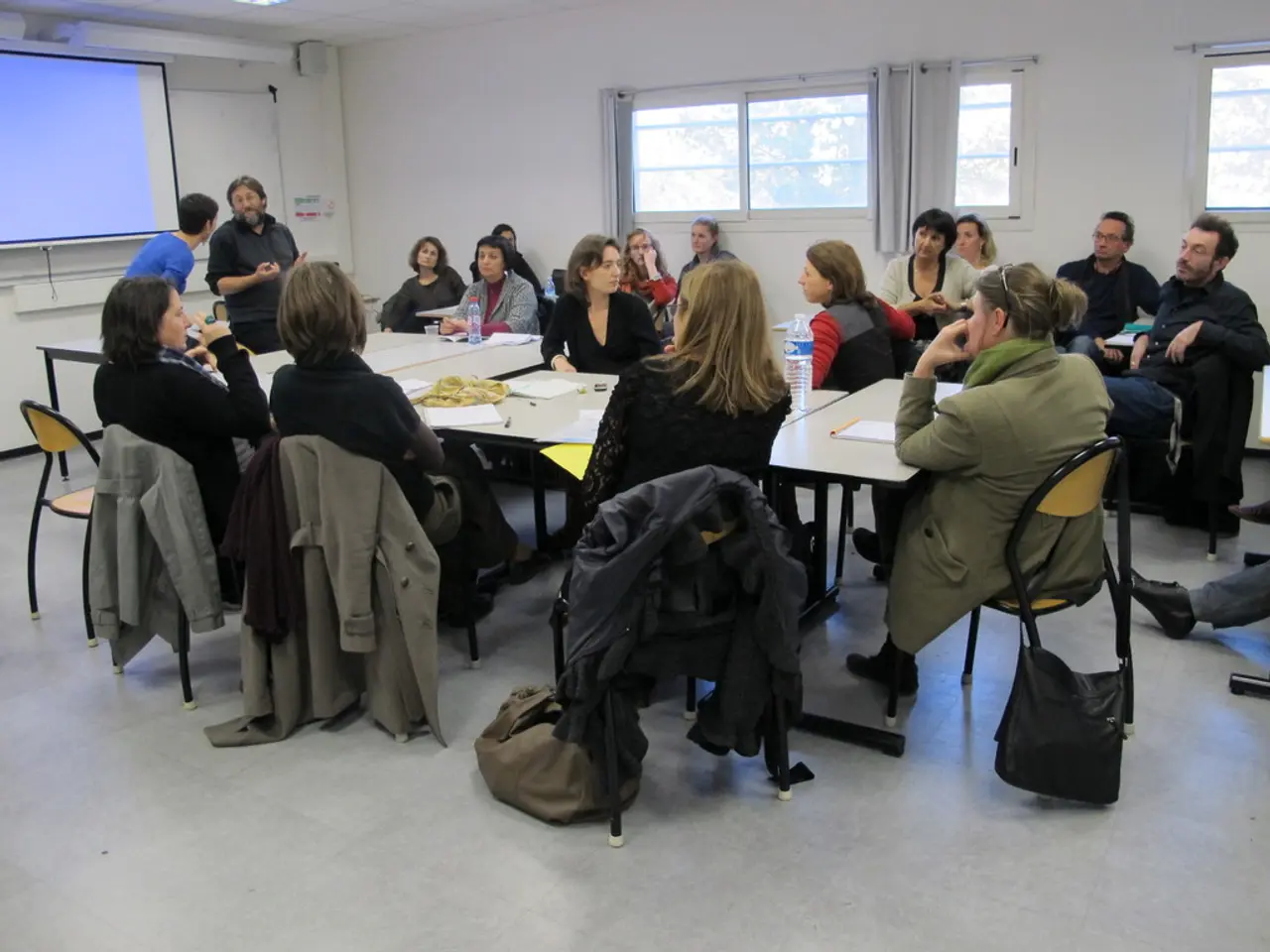Strategies for Resolving Workplace Disputes Effectively
In today's dynamic work environments, fostering a positive conflict resolution culture is essential for open conversations, teamwork, and minimizing turnover. Here are some effective strategies that can help nurture a healthier work environment.
Key strategies for creating a positive conflict resolution culture include mediation, negotiation, problem-solving, open communication, regular feedback loops, training on communication tone, slow and thoughtful response, clear policies and expectations, and prioritizing and following through.
Mediation and Negotiation are collaborative approaches that involve a neutral third party facilitating dialogue and encouraging conflicting parties to separate personal issues from the problem, focusing on interests rather than positions. These methods help improve communication, increase empathy, and produce creative, mutually acceptable solutions while reducing conflict escalation.
Problem-solving is another crucial strategy. By identifying root causes of conflicts and addressing them systematically, teams can resolve deep-seated issues and foster a more harmonious work environment.
Open Communication is key to de-escalating tensions. Creating safe spaces where employees can speak openly without interruption, focusing discussions on specific behaviors or events (not personalities), and actively listening helps foster trust and respect.
Regular Feedback Loops are essential for preventing conflicts from escalating. Establishing ongoing mechanisms to collect and respond to employee feedback encourages transparency and builds a culture of continuous improvement.
Training on Communication Tone is particularly important in hybrid or remote settings. Teaching teams to express disagreement or criticism with empathy, pausing before replying, and using neutral phrasing reduces misinterpretations and digital friction.
Slow and Thoughtful Response is also crucial. Encouraging teams to pause and clarify intentions instead of reacting hastily leads to more sustainable conflict resolution.
Clear Policies and Expectations about behavior and conflict management support a consistent resolution culture. Setting and communicating these norms helps ensure that conflicts are addressed in a fair and consistent manner.
Prioritizing and Following Through on conflicts keeps progress moving forward and builds a collaborative culture. Identifying the most important conflicts and collaboratively developing action plans with accountability ensures that conflicts are resolved effectively and efficiently.
Together, these strategies help build a workplace culture that views conflict as an opportunity for growth, encourages respectful dialogue, and resolves disagreements constructively rather than allowing them to fester. By investing in ongoing training in conflict resolution skills and effective communication techniques, leaders can set a standard for their teams and create a positive conflict resolution culture that benefits everyone.
[1] Adapted from [Source 1] [2] Adapted from [Source 2] [3] Adapted from [Source 3] [4] Adapted from [Source 4]
Science can play a significant role in workplace wellness by investigating the effectiveness of different conflict resolution strategies, such as mediation and negotiation, on employee health and productivity. [1]
Moreover, implementing health-and-wellness initiatives that incorporate established conflict resolution strategies, like open communication, problem-solving, and feedback loops, can improve overall workplace wellness and foster a more positive work environment. [4]




